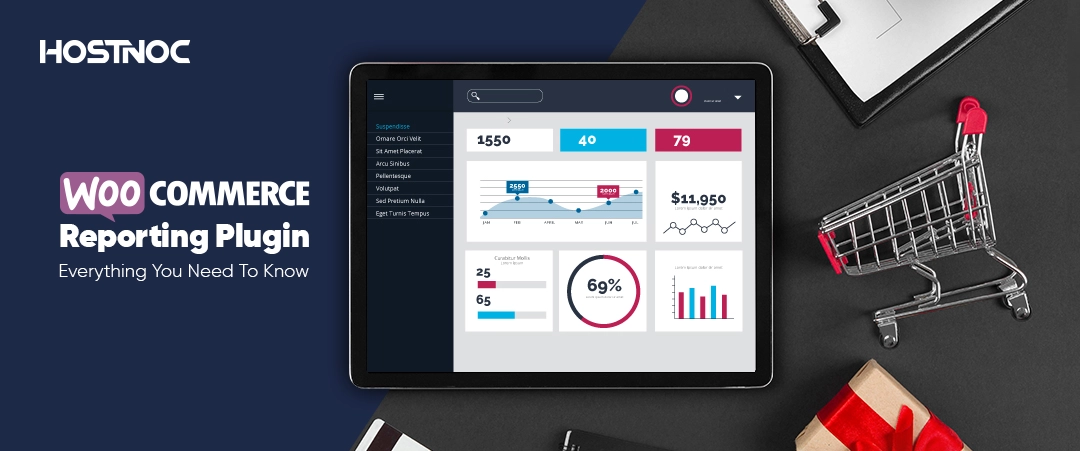WooCommerce Reporting Plugin: Everything You Need To Know

How To Configure Custom Sticky Buttons On WordPress?
April 8, 2024
How To Configure and Optimize PHP-FPM in the Cloud?
April 19, 2024WooCommerce, the renowned e-commerce plugin for WordPress, has revolutionized online selling by providing a user-friendly platform for businesses of all sizes. One of the key elements that make WooCommerce stand out is its flexibility and extensibility.
Thanks to a plethora of plugins available, users can enhance and customize their online stores to meet their specific needs. In this comprehensive guide, we’ll delve into the world of WooCommerce reporting plugins, exploring how they empower users to track, analyze, and share vital data to optimize their e-commerce operations.
- Why Do You Need WooCommerce Reporting?
- How To Install WooCommerce Reporting Plugins?
- What are the Key Features of WooCommerce Reporting Plugins?
- How To Customize and Visualize Data With WooCommerce Reporting Plugin?
- How To Share and Collaborate on Data From WooCommerce Reporting Plugin?
- How To Ensure Security and Compliance?
- How To Choose the Right WooCommerce Reporting Plugin For Your Business?
- Conclusion:
Why Do You Need WooCommerce Reporting?
Effective decision-making in the competitive e-commerce landscape relies heavily on accurate and actionable data. WooCommerce reporting plugins address this need by providing users with a comprehensive set of tools to track various aspects of their online stores. From sales and customer behavior to inventory management, these plugins offer insights that can be crucial for strategic planning and growth.
Read more: Managed WooCommerce Hosting
How To Install WooCommerce Reporting Plugins?
The first step towards harnessing the power of reporting is selecting and installing the right plugin for your needs. The WooCommerce marketplace boasts a variety of reporting plugins, each catering to different aspects of e-commerce analytics. Some popular choices include Metorik, Advanced WooCommerce Reporting, and
WooCommerce Admin.
Installation is a straightforward process. Users can navigate to their WordPress dashboard, access the Plugins section, and click on “Add New.” From there, they can search for their chosen reporting plugin, install it, and activate it with just a few clicks.
What are the Key Features of WooCommerce Reporting Plugins?
A. Sales and Revenue Tracking:
- Monitor sales performance over time.
- Track revenue trends and identify high-performing products.
- Generate reports on sales by product, category, or customer.
B. Customer Behavior Analysis:
- Understand customer demographics and preferences.
- Analyze purchase patterns and shopping cart abandonment rates.
- Identify loyal customers and incentivize repeat business.
C. Inventory Management:
- Keep track of stock levels and product availability.
- Set up low stock alerts to prevent product shortages.
- Optimize inventory turnover for better cash flow.
D. Performance Analytics:
- Monitor website performance and user engagement.
- Track conversion rates and analyze the effectiveness of marketing campaigns.
- Identify areas for improvement in the sales funnel.
How To Customize and Visualize Data With WooCommerce Reporting Plugin?
WooCommerce reporting plugins excel in presenting complex data in a visually appealing and easily understandable format. Users can generate customizable reports and dashboards, allowing them to focus on specific metrics relevant to their business goals. Interactive charts and graphs make it simple to interpret data and draw actionable insights.
How To Share and Collaborate on Data From WooCommerce Reporting Plugin?
Many WooCommerce reporting plugins enable users to share reports with key stakeholders, team members, or external collaborators. This feature fosters collaboration and ensures that everyone involved in the business has access to the latest insights. Whether it’s sharing a weekly sales report or providing real-time updates on inventory levels, collaboration features enhance communication within the organization.
Read more: 10 Server Security Best Practices You Should Adopt Right Now
How To Ensure Security and Compliance?
As e-commerce transactions involve sensitive customer data, security is a paramount concern. Reputable WooCommerce reporting plugins prioritize data security and adhere to industry standards and regulations. Users can rest assured that their business data is handled securely, and compliance with privacy laws is maintained.
How To Choose the Right WooCommerce Reporting Plugin For Your Business?
Choosing the right reporting plugin depends on the specific needs and goals of your online store. Consider factors such as the scale of your business, the level of customization required, and the specific metrics you want to track. Additionally, look for plugins with good customer support, regular updates, and positive reviews from other WooCommerce users.
Conclusion:
WooCommerce reporting plugins serve as invaluable tools for e-commerce businesses looking to thrive in a competitive market. By providing insights into sales, customer behavior, inventory, and more, these plugins empower users to make informed decisions and drive their businesses towards success. As you explore the diverse range of reporting plugins available, remember to align your choice with your unique business requirements, ensuring that you harness the full potential of WooCommerce for your online store.
Did this article help you in installing the WooCommerce reporting plugin? Share it with us in the comments section below.



